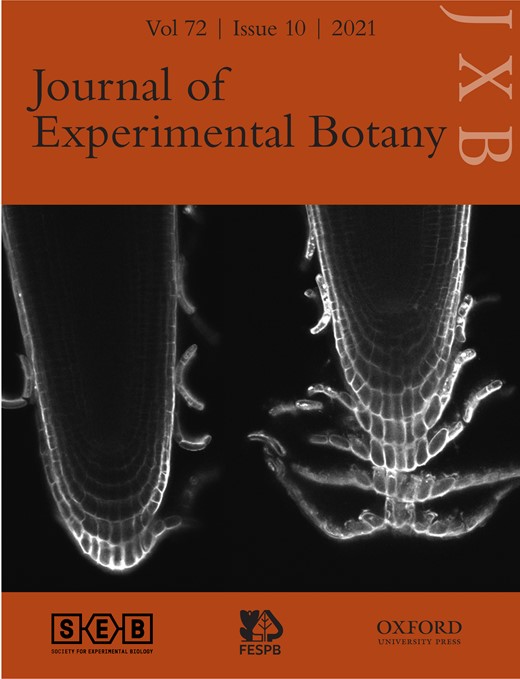Ver ítem
- xmlui.general.dspace_homeCentros Regionales y EEAsCentro Regional Buenos Aires NorteEEA PergaminoArtículos científicosxmlui.ArtifactBrowser.ItemViewer.trail
- Inicio
- Centros Regionales y EEAs
- Centro Regional Buenos Aires Norte
- EEA Pergamino
- Artículos científicos
- Ver ítem
Artificial selection for grain yield has increased net CO2 exchange of the ear leaf in maize crops
Resumen
Identifying the physiological traits indirectly selected during the search for high-yielding maize hybrids is useful for guiding further improvements. To investigate such traits, in this study we focused on the critical period of kernel formation because kernel number is the main yield component affected by breeding. Our results show that breeding has increased the number of florets per ear and ear growth rate but not the vegetative shoot growth rate,
[ver mas...]
Identifying the physiological traits indirectly selected during the search for high-yielding maize hybrids is useful for guiding further improvements. To investigate such traits, in this study we focused on the critical period of kernel formation because kernel number is the main yield component affected by breeding. Our results show that breeding has increased the number of florets per ear and ear growth rate but not the vegetative shoot growth rate, suggesting localised effects around the ear. Consistent with this possibility, breeding has increased the net CO2 exchange of the ear leaf in field-grown crops grown at high population densities. This response is largely accounted for by increased light interception (which increases photosynthesis) and by reduced rates of respiration of the ear leaf in modern hybrids compared to older ones. Modern hybrids show increased ear-leaf area per unit leaf dry matter (specific leaf area), which accounts for the reduced respiratory load per unit leaf area. These observations are consistent with a model where the improved ear leaf CO2 exchange helps the additional florets produced by modern hybrids to survive the critical period of high susceptibility to stress and hence to produce kernels.
[Cerrar]

Autor
Cagnola, Juan I.;
Parco, Martín;
Rotili, Diego Hernán;
Ploschuk, Edmundo L.;
Curin, Facundo;
Amas, Juan Ignacio;
Luque, Sergio F.;
Maddonni, Gustavo Angel;
Otegui, María Elena;
Casal, Jorge José;
Fuente
Journal of Experimental Botany 72 (10) : 3902–3913. (May 2021)
Fecha
2021-03
Editorial
Oxford University Press
ISSN
0022-0957
1460-2431 (online)
1460-2431 (online)
Formato
pdf
Tipo de documento
artículo
Palabras Claves
Derechos de acceso
Abierto
 Excepto donde se diga explicitamente, este item se publica bajo la siguiente descripción: Creative Commons Attribution-NonCommercial-ShareAlike 2.5 Unported (CC BY-NC-SA 2.5)
Excepto donde se diga explicitamente, este item se publica bajo la siguiente descripción: Creative Commons Attribution-NonCommercial-ShareAlike 2.5 Unported (CC BY-NC-SA 2.5)


